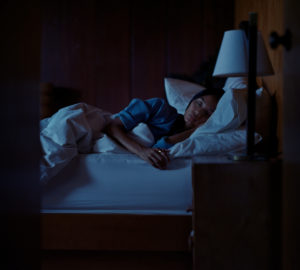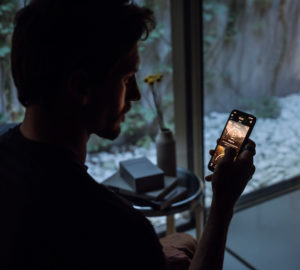- Light exposure regulates your circadian rhythm — your body’s internal clock.
- Intentional sun exposure in the first 30 to 60 minutes after waking has been shown to increase alertness, boost mood, lower stress, and improve sleep quality.
- Oura members can tag “morning sunlight” to see the effects of it on their daily Sleep Score and Readiness Score.
It may sound too good to be true, but the mere act of getting sunlight in your eyes in the morning may be a game-changer for your health.
Not only does morning sunlight boost your energy levels, but it may also improve your sleep at night. And some science suggests that morning sun exposure can improve your overall health as well.
One reason: Your circadian rhythm is regulated by light exposure, and intentionally viewing morning sunlight prepares your body and mind for the day ahead. The best part? It’s free, accessible, and research-backed.
| Member Tip: To measure the effect of light exposure on your sleep, use Oura’s Tags feature to track habits like morning sunlight, evening sunlight, or a sunlight alarm. |
The Sun & Your Circadian Rhythm
Your circadian rhythm is your body’s 24-hour internal clock. It’s modulated by biological processes, such as hormones, that respond to external cues. The most influential cue is light exposure. Humans are designed to wake when the sun rises and sleep when it has set.
In other words: Before clocks were invented, this internal response to light was the primary timekeeping mechanism. In your brain, light-sensitive cells in your eyes transmit signals to the brain’s suprachiasmatic nucleus (SCN), which is the central pacemaker of your internal body clock.
Your body is most sensitive to light during three times of day: roughly the first hour after waking, two hours before your bedtime, and during the night. You can leverage these three phases of daylight as a way to regulate your circadian rhythm.
In the natural environment, the visible spectrum of light changes throughout the day. To synchronize your internal rhythm, you can mimic this by using or limiting artificial lights that mirror the naturally occurring light spectrum.
| Time of day | Type of light | Examples |
| Morning | White or blue | Morning sunlight, LED lights, fluorescent lights, screens |
| Afternoon | Yellow and orange | Sunlight when it’s lower in the sky, orange light bulbs, lamps |
| Evening | Red or darkness | Red light bulbs, candles, blackout blinds, eye masks |
READ MORE: How Blue Light Impacts Your Sleep
3 Benefits of Morning Sunlight
1. Morning sunlight can help you wake up.
In the morning, sunlight exposure suppresses melatonin and increases cortisol. While cortisol gets a bad rap, it’s essential for feeling alert in the morning. This is known as the cortisol-awakening response. In fact, studies have found that low waking cortisol levels are associated with fatigue.
On the other hand, levels of melatonin, a sleep-inducing hormone, are low in the morning, then steadily rise throughout the day and peak in the middle of the night. When melatonin levels remain higher in the morning, it can make waking up difficult. This tends to happen more in winter, when mornings are darker.
READ MORE: Why Do I Wake Up Tired? How to Feel More Alert in the Morning
2. Morning sunlight can improve your sleep quality.
By regulating your circadian rhythm, sunlight can improve your sleep. In the morning, sunlight suppresses melatonin to help cut out sleepiness. Then, as melatonin rises, you start to feel tired in the evening, helping you to fall asleep more easily. In fact, studies have found that daylight exposure increases sleep duration, improves sleep quality, and aids in getting to sleep earlier.
Plus, when you get sunlight exposure in the afternoon, you’re exposed to yellow and orange light, corresponding to the position of the sun in the sky. These particular wavelengths consolidate your circadian timing, signaling to your brain that it’s time to start slowing down.
| Member Tip: To understand how long it took you to fall asleep last night, take a look at your Sleep Latency, one of the contributors to your Sleep Score. Ideally, you want to fall asleep within 10 to 20 minutes of your head hitting the pillow. |
3. Morning sunlight can boost your mood and lower stress.
Morning sunlight can increase cortisol, the stress hormone. But ironically, this small stress spike can actually lower stress levels for the rest of the day. This is a type of hormetic stressor, a beneficial stressor that can make you more resilient to stress.
Alongside a cortisol increase, morning sunlight initiates a cascade of positive changes associated with better mood and mental clarity, including an increase in serotonin. Serotonin is a feel-good chemical that boosts your mood, and later, converts to melatonin.
Studies have also found that morning blue light has an antidepressant effect and can be used as a treatment for seasonal affective disorder.
| Member Spotlight: When we asked Oura members for their most effective ways to improve their heart rate variability (HRV), sun exposure consistently cropped up. |
Additional Benefits
Sun exposure is associated with a range of additional benefits:
- It can boost the body’s vitamin D supply.
- It can treat certain skin conditions like eczema.
- It can improve symptoms of depression or other mental health conditions.
- It can improve cognitive function.
- It may regulate appetite.
However, it remains uncertain whether brief exposure in the morning is sufficient to trigger these positive effects.
5 Tips to Get More Sunlight (Even In Winter!)

- Immediately open your blinds or curtains. As soon as you’re awake, bring as much light as possible into your environment.
- Start with 5 minutes. Stanford neuroscientist Andrew Huberman, PhD, advises getting 5 to 10 minutes of sun exposure on a sunny morning, and 15 to 20 minutes on a cloudy day. On dark mornings with inadequate light, turn on as many bright indoor lights as you can to mimic the effect.
- Get sunlight within 30 to 60 minutes of waking. Huberman recommends getting your morning sunlight within this time frame. He also suggests repeating this protocol in the late afternoon for orange/yellow light exposure to trigger the release of melatonin.
- Consider using a sunlight alarm or go au naturale. Early risers can try leaving their blinds or curtains open at night to wake up naturally at sunrise (unless you have light outside your windows at night, which can disturb your sleep). Also, during the shorter winter months, there may not be enough morning light to wake you up. Sunlight alarms are good alternatives, mimicking sunrise at your chosen time.
- Take your daily habits outside. Try to “stack” your habits so that you can do multiple things at once. For instance, take your morning work call or drink your first cup of coffee outside. Whether you’re stretching, journaling, or eating breakfast, try to take it outdoors to make the most of it.
RELATED: How to Structure Your Ideal Day as a Morning Chronotype




